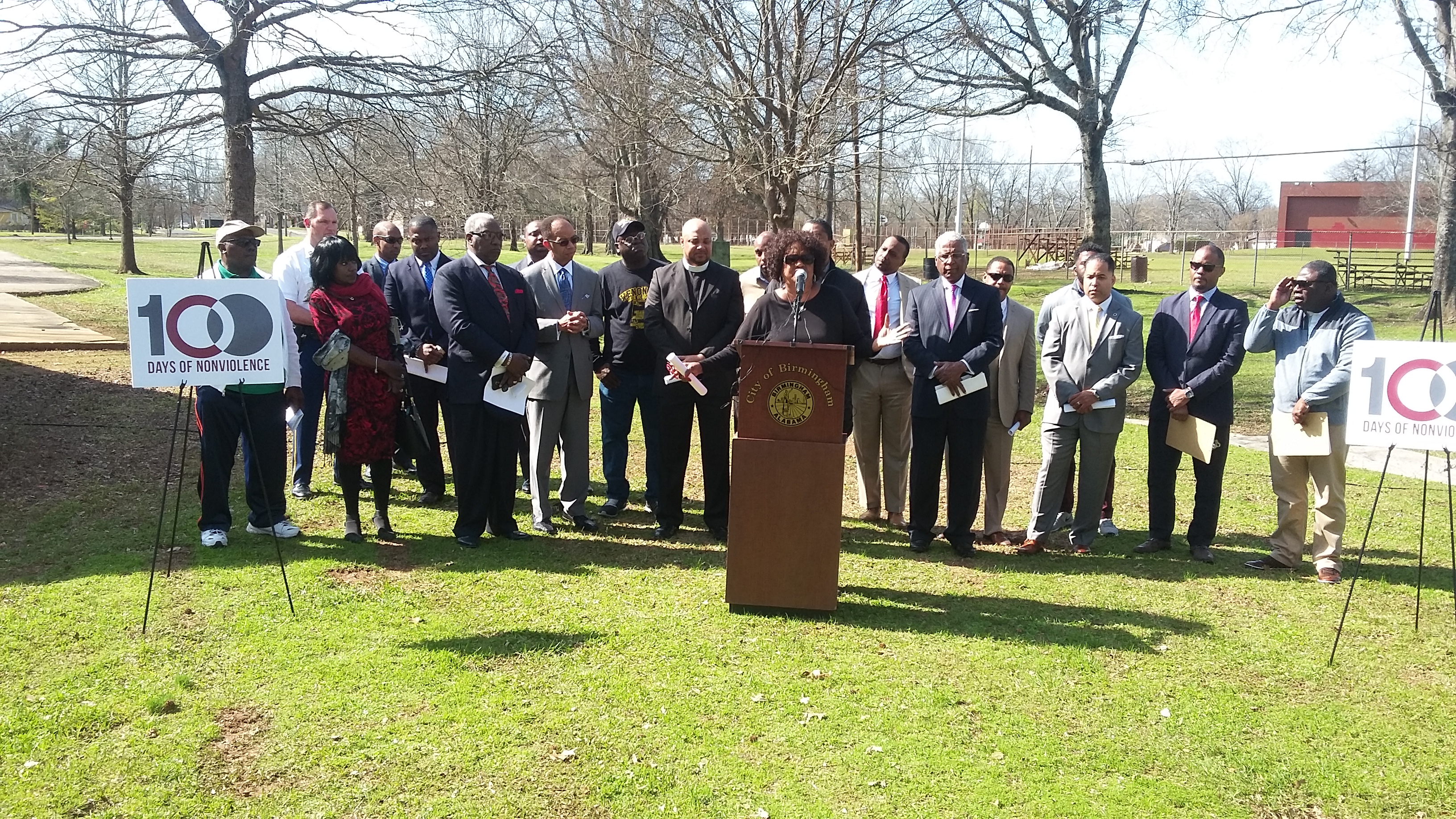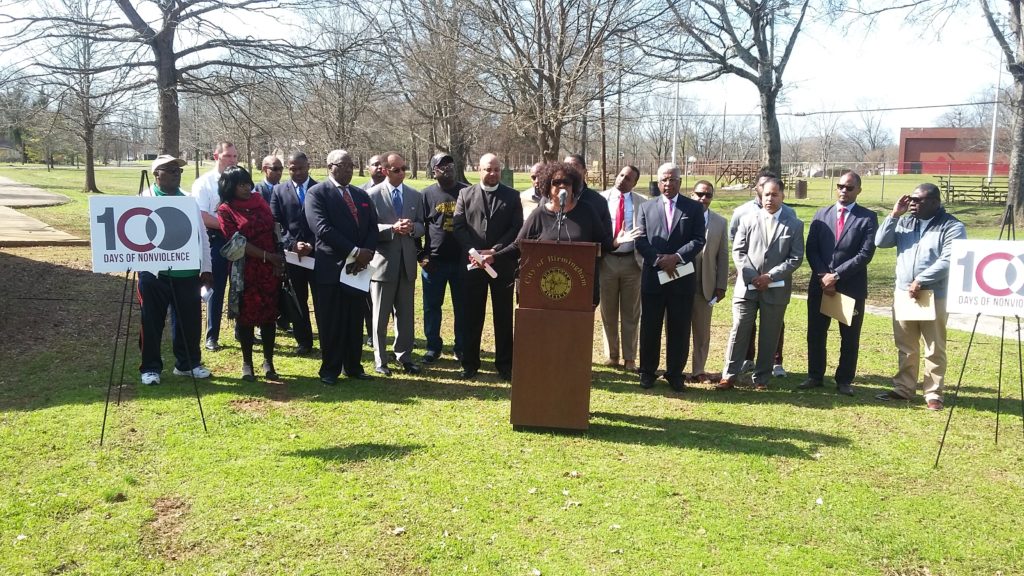
By Barnett Wright
The Birmingham Times

Roderick Dwayne Wesley was shot in the face 22 years ago and lived. That was followed by a life in and out of prison until 2009, when he came home. He hasn’t been back behind bars since.
Today, Wesley is a wanted man—not by the police, as in times past, but by elected officials who want to know how to address the recent increase in violence in Birmingham. On Tuesday, he addressed the Birmingham City Council.
City leaders want other individuals like Wesley, who grew up in the Kingston community, to speak out about what can be done to quench the violence that seems to be increasing in the Magic City.
The recent shooting deaths of two Wenonah High School students—Juzahris Webb and Isaiah Johnson—were “the match that lit the flames” to bring elected officials, clergy, civic leaders, and residents together in an effort to reduce violence, said Birmingham City Councilman Jay Roberson, who was at a press conference in Wiggins Park in Southwest Birmingham joined by Mayor William Bell, Police Chief A.C. Roper, Jefferson County Commissioner Sandra Little Brown and others.
“It’s time for us to address this problem, and we’re going to have to do it in nontraditional ways,” said Roberson. “It’s time to go to the source and revisit what it’s going to take to steer young people away from participating in violent activity. That’s what we want to achieve by bringing all these parties together in these sessions.”
‘Not a Gang Problem’
The “parties” are to include current and former gang members, as well as community residents and people like Wesley, who have knowledge of the streets.
Wesley, 47, said city officials and others first must understand what’s behind some of the violence.
“This is not a gang problem,” he told the City Council.
Asked after the meeting what he meant, Wesley said, “[In some instances,] you’re moving people out of their comfort zones. You’ve got people coming from Loveman Village [public housing] to Gate City [public housing], and they are at odds. … Now those guys are trying to make reputations for themselves in the new neighborhoods, and they’re saying, ‘Ain’t nobody going to punk me. This is how it’s going to be.’”
That mindset can lead to violent exchanges, said Wesley, who has been to prison three times, beginning in 1997; he has been out for the past eight years. Wesley said gang summits may not be as important as reaching children during their formative years, as early as elementary school.
“We need intervention programs for these children,” he said. “If it were up to me, I would implement a class called Law 101 in the Birmingham school system if that’s what it would take to deter our children from picking up guns.
“You’ve got to show these children in black and white what the penalty is for this. Be for real. [Tell them], ‘If you walk around with guns and shoot somebody, be prepared to go to jail. You’re getting 25, 30, 35 years because that’s what they’re giving out for violent crime.’”
Social Media
According to those preparing to reduce violence, another area of focus should be social media. That, said Birmingham Police Lt. Sean Edwards, is where much of the problem begins.
“Social media adds another dynamic for a lot of younger people,” said Edwards, who is also the public information officer for the Birmingham Police Department. “It seems that a lot of the taunting begins on social media with a lot of younger people. By the time law enforcement catches up to it, these guys have already been communicating for several weeks.”
Edwards recalled a situation last year, when teens planned a fight online. That fight yielded a loss of life.
“That was already weeks and weeks ahead of us,” he said.
Edwards added that bad choices in associates and activities have factored into many of Birmingham’s homicides, as well.
“If you’re going to hang out with people who can possibly take your life, you might want to try a new group of people,” he said. “If you’re going to be in places where violence is taking place, where folks are known to carry firearms, you might want to stay away from those places. That’s what we’re seeing as a common denominator in a lot of these. That’s been a major theme.”
Community Involvement
The city’s effort to fight against violent crime is being waged in another way, too: the Birmingham Violence Reduction Initiative (BVRI) brings several partner agencies together to address various aspects of the growing problem by encouraging community involvement and conducting neighborhood meetings. One key event is the Victory Over Violence tour, which kicks off on Saturday, Feb. 18, 2017, at the Southtown Court public housing development. (Additional tour stops are scheduled for Kingston, March 11; Gate City, March 25; Loveman Village, April 8; and Smithfield, April 22.)
BVRI Project Manager Jarralynne Agee said the fight takes place on different fronts—from young children growing up, to youth who are involved in gangs, to past offenders trying to get on a new path.
“We know that we cannot police or arrest away homicides,” Agee said. “This is a community effort, through which the community has to work in partnership with law enforcement. We have to assume collective responsibility for all of our children.”
Solomon Crenshaw Jr. contributed to this article.




